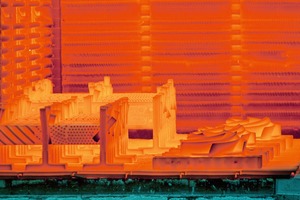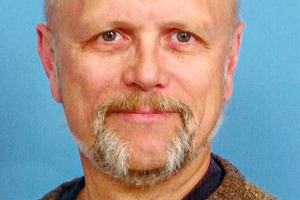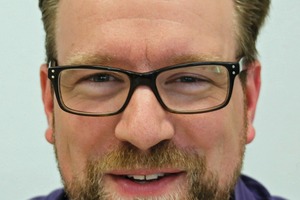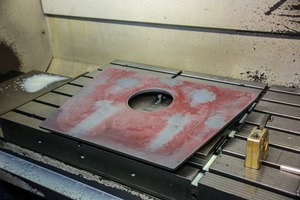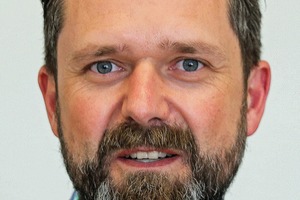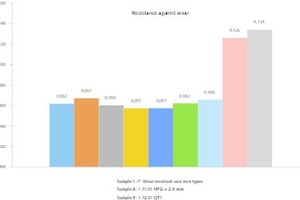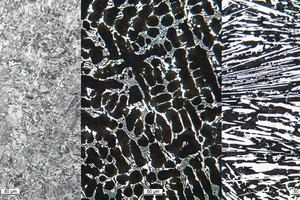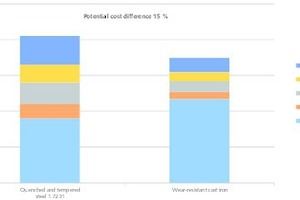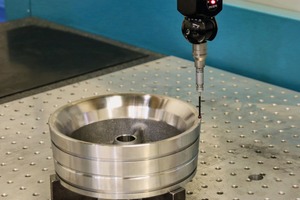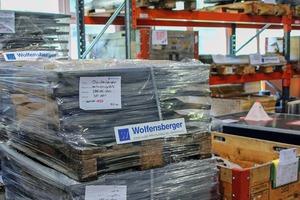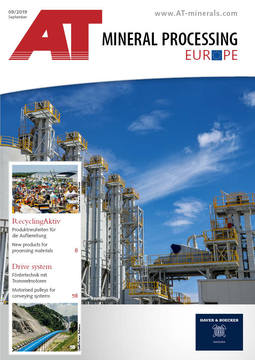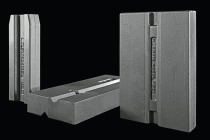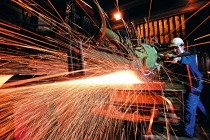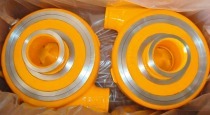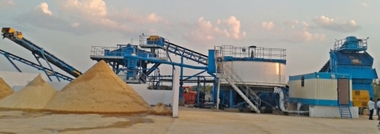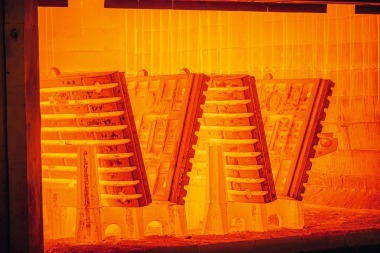Good wear-resistant castings are all in the head
Summary: Wear and the resulting losses are not only annoying but also a considerable cost factor in many fields of industrial application. This is particularly true where goods have to be crushed, ground, conveyed or pumped. Component wear caused by abrasion and the resulting costs cannot be eliminated but can be reduced to a considerable extent in some cases through the selection of suitable materials. Here are a few tips from experts at a foundry specializing in the manufacture of wear-resistant components.
“Wherever problems of wear are concerned, nothing can replace experience,” points out Tobias Henne, Head of Sales & Business Development for the foundry Wolfensberger AG in Bauma/Switzerland). The company produces high-performance castings for machinery and plant construction. A large proportion of the production goes into the “classical” fields of engineering where castings generally last for the whole lifetime of the machine. Both manufacturer and foundry generally regard the job as being finally completed when such parts have met the acceptance specification.
In the case of wearing parts such as rotor discs and pump housings, water turbines or turbochargers, however, it is necessary to adopt a different mindset. Depending on where they are used, these types of component are subject to a greater or lesser rate of wear and sometimes have to be replaced several times during the lifetime of the plant. Consequently, they represent a considerable cost factor. The question as to how well or how long such castings last is therefore one of considerable economic importance.
Wear depends on the application
“Understandably, many users believe that so-called wear resistance is a trivial material attribute,” adds Michael Sieger, metallurgist and Head of Quality at Wolfensberger. However, this is a misconception, he claims, because tribological systems often depend in a very complex manner not only on the material of the component but also on the goods it is used to process, the type of load as well as other factors such as temperature, pH value and corrosion. “Wear resistance” as such does not exist, he continues. Due to the complexity of the operations, a given material may prove to be outstanding in one specific application and then fail dismally in the next.
Unfortunately, specifications or DIN standards only rarely provide assistance. Users would therefore be well advised when choosing a supplier to select one with extensive experience in this field and capable of supporting its customers accordingly. This also includes the ability to produce a broad range of very different casting materials. Otherwise, the customer would face the risk that, instead of an ideal solution for their application, they would be offered one that the supplier in question is able to produce, but which may be far from providing a good fit.
High surface hardness helps only in certain cases
“Both machine producers and users often think that it is sufficient to set a particularly high surface hardness for the components,” reveals Tobias Henne. In such cases, favourably priced quenched and tempered steels are generally used, which do, however, have a primary structure with only a limited capability of resisting an abrasive attack due to its low hardness and absence of carbides. This is why a hard layer is generated on the base material by means of processes such as case hardening, nitride hardening or the welding of mechanically resistant materials containing stellite. While this may be sufficient for some fields of application, in other cases it may prove to be the wrong approach.
In many wearing parts, the abrasion extends much further into the material, beyond the surface layer of only a few millimetres in thickness. After the thin hard layer has been penetrated, the rate of erosion can then accelerate considerably. In such cases, the properties within the bulk of the material play a much more important role in the overall durability than those of the hardened outer layer, no matter how outstanding its hardness may be.
Cheap – or preferably value for money?
“Replacing worn-out parts is often time-consuming and may result in lengthy downtimes for expensive plants,” explains M. Sieger. Consequently, spare parts made of lower-priced materials frequently turn out to be the more expensive alternative because the availability of the plants is severely reduced due to frequent shutdowns for repairs. Despite the difference in price, it may often be more cost-effective in cases like these to select materials that withstand the wear for a considerably longer period than quenched and tempered steels.
According to our experience, often the subjects of “wear” and “wear-resistant materials” frequently receive far too little attention in the education of engineering designers, so that knowledge deficits in this respect are often widespread. Carbide-containing cast irons are often particularly suitable because the carbides embedded in their structure with their high level of hardness frequently make them much better able to withstand the wear attack than the base material. Performing even better are cast iron materials containing chromium, in which the latter forms special carbides with a hardness substantially greater than normal carbides (up to 1600 HV). Which solution is ultimately the best in terms of total cost of ownership (TCO) can often only be determined after intensive expert consultation.
As Wolfensberger has been supplying wear-resistant castings for a wide range of different applications for decades, the company has a wealth of experience that it is glad to share with its customers. This also includes comprehensive knowledge in the field of metallurgy and heat treatment, because the standards that apply to such materials are often drafted so broadly that only the expert is able to define the optimum composition and heat treatment for the respective purpose. Furthermore, the company also has a well-equipped laboratory and can work together with its customers as partners in order to conduct trials on the application-related optimization of alloys and heat treatment procedures. In such cases, close cooperation additionally takes place with external laboratories and research establishments.
Supplementary services: Precision processing and logistics
“Another important service for our customers is the precision machining of even ultra hard castings,” explains Tobias Henne. Thanks to a separate factory specializing in this task, Wolfensberger also has many years of experience in the field and can even machine materials having a high carbide content and thus reaching hardnesses of up to 65 HRC. The company‘s high level of metallurgical expertise makes an important contribution in this respect. Exact knowledge of the conversion behaviour of the materials makes it possible to soft anneal the parts for the roughing process by a heat treatment adjusted precisely to the specific material, thus enabling the optimum structural state for the application to be produced.
As a result, Wolfensberger is able to offer its customers a single-source supply for the entire process chain involved in the production of premium heavy-duty castings, all the way from smelting and casting, via heat treatment, through to machining ready for assembly. Apart from the qualitative benefits, the better control of the entire production process that this entails also has advantages with respect to delivery times since no delays due to external transport operations have to be considered. Customers also benefit from tailor-made logistics solutions such as the storing of ready-to-assemble machined spare parts in a consignment warehouse. From here the machine producer can issue a requisition for parts to be delivered to points of use, such as an ore processing plant or a flour mill, where they are currently required. This also saves unnecessary expenditures in logistics: instead of the parts travelling from foundry to machine producer and from there to the end user, only one transport operation is necessary.
Klaus Vollrath, Aarwangen/Schweiz
Klaus Vollrath ist Ingenieur mit langjähriger Berufserfahrung in mehreren Branchen. Seit 1997 ist er als freiberuflicher Journalist und Cineast im Bereich technischer Publikationen tätig.

